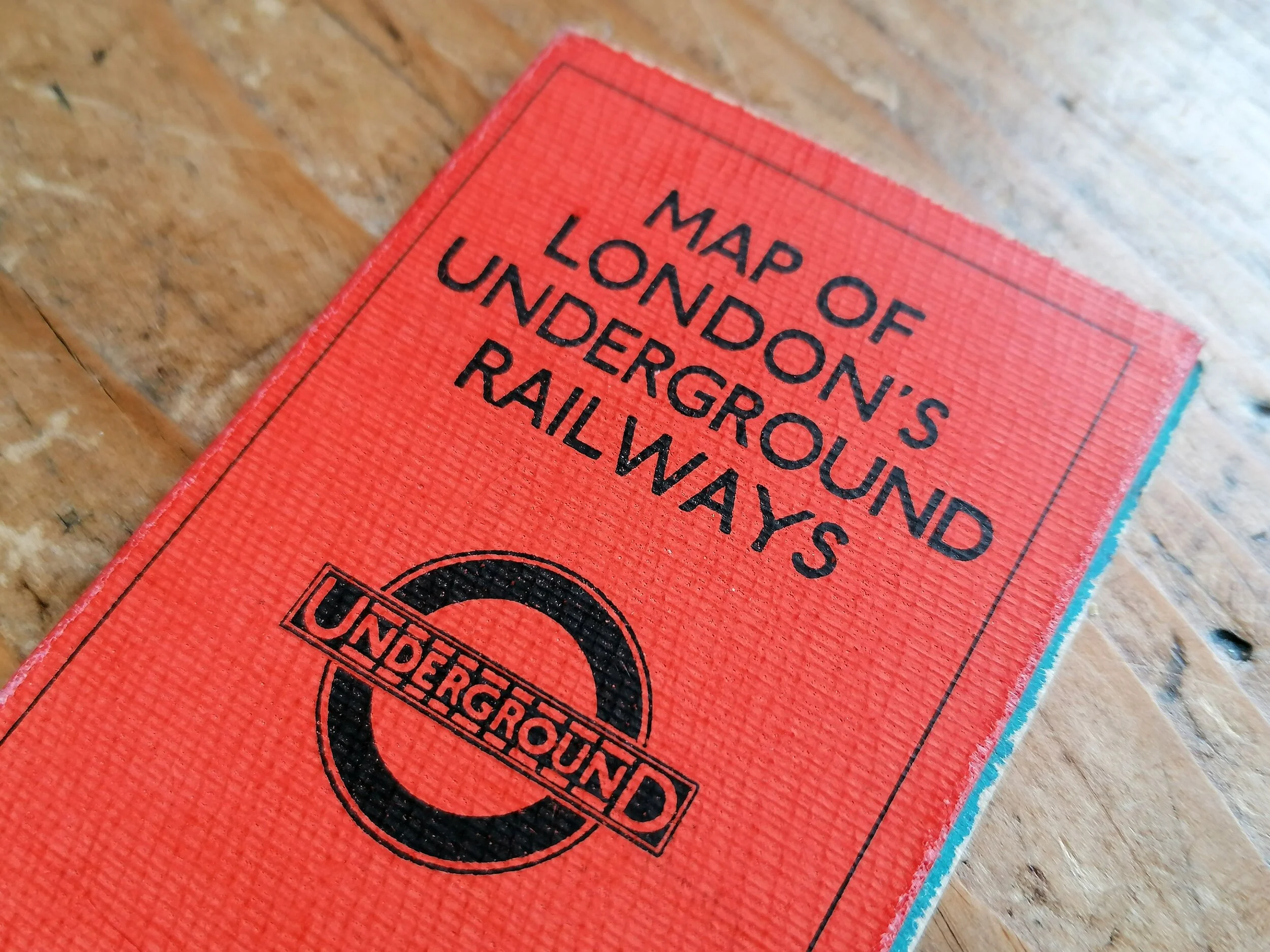 Image 1 of 10
Image 1 of 10

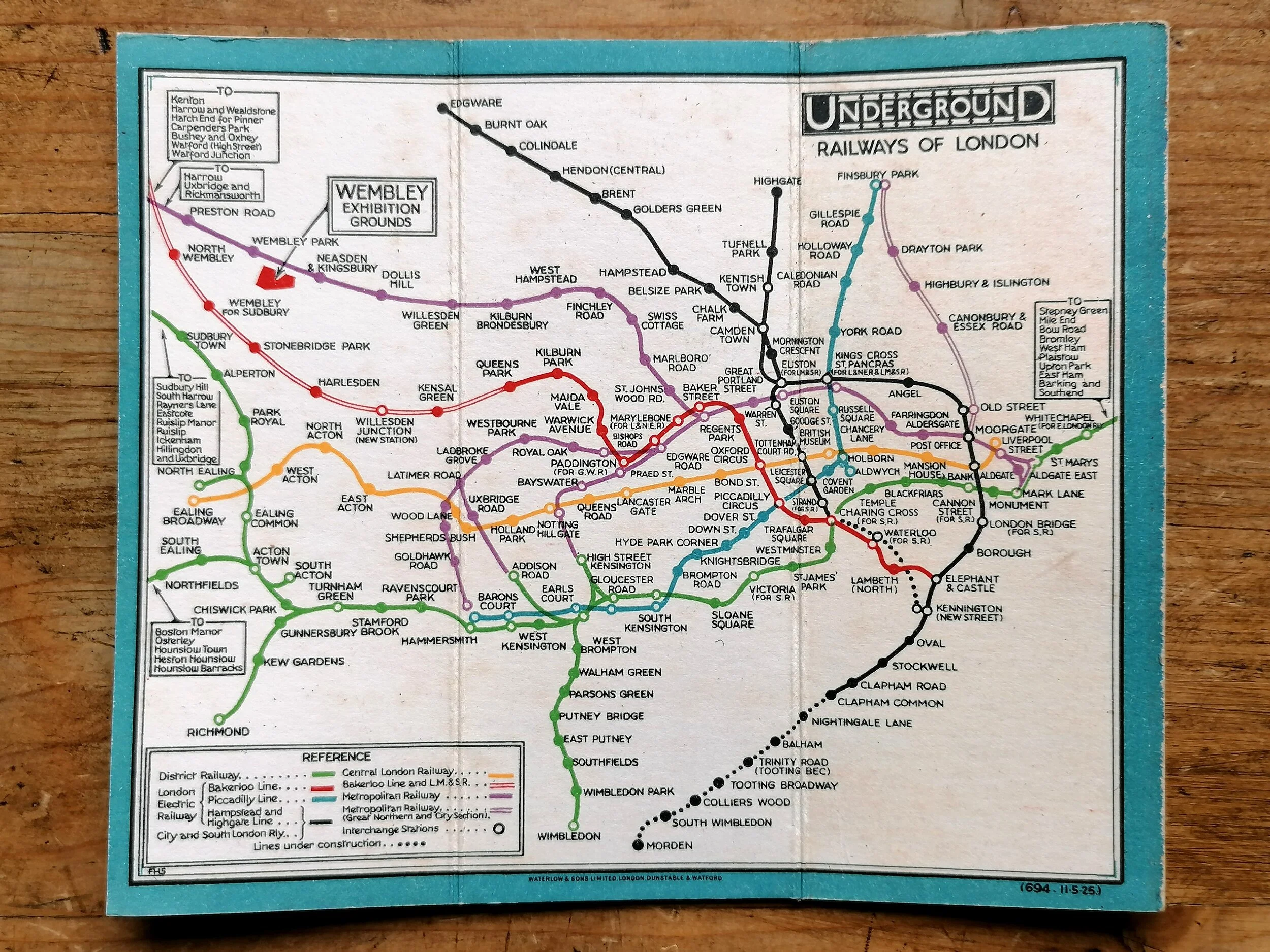 Image 2 of 10
Image 2 of 10

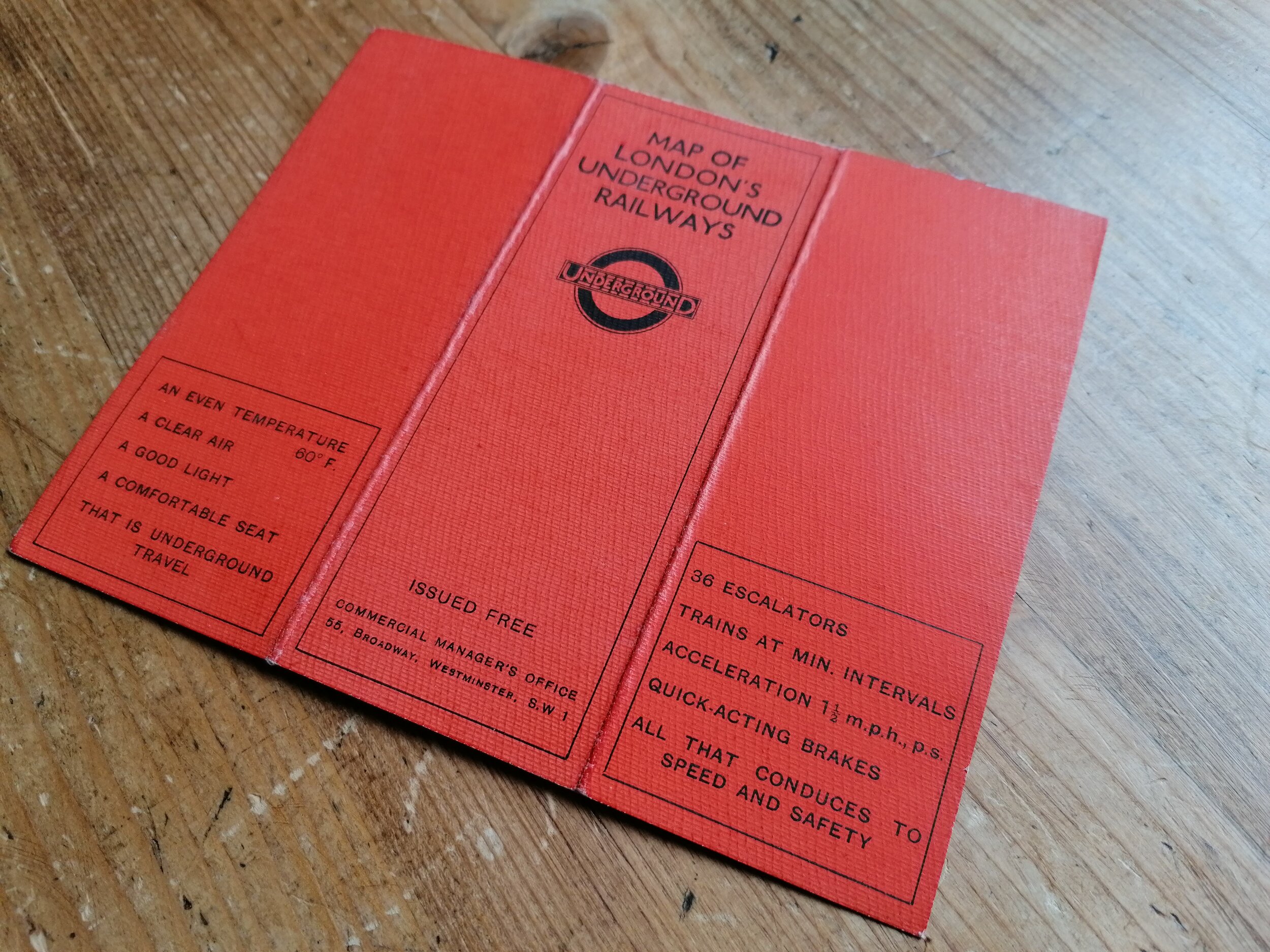 Image 3 of 10
Image 3 of 10

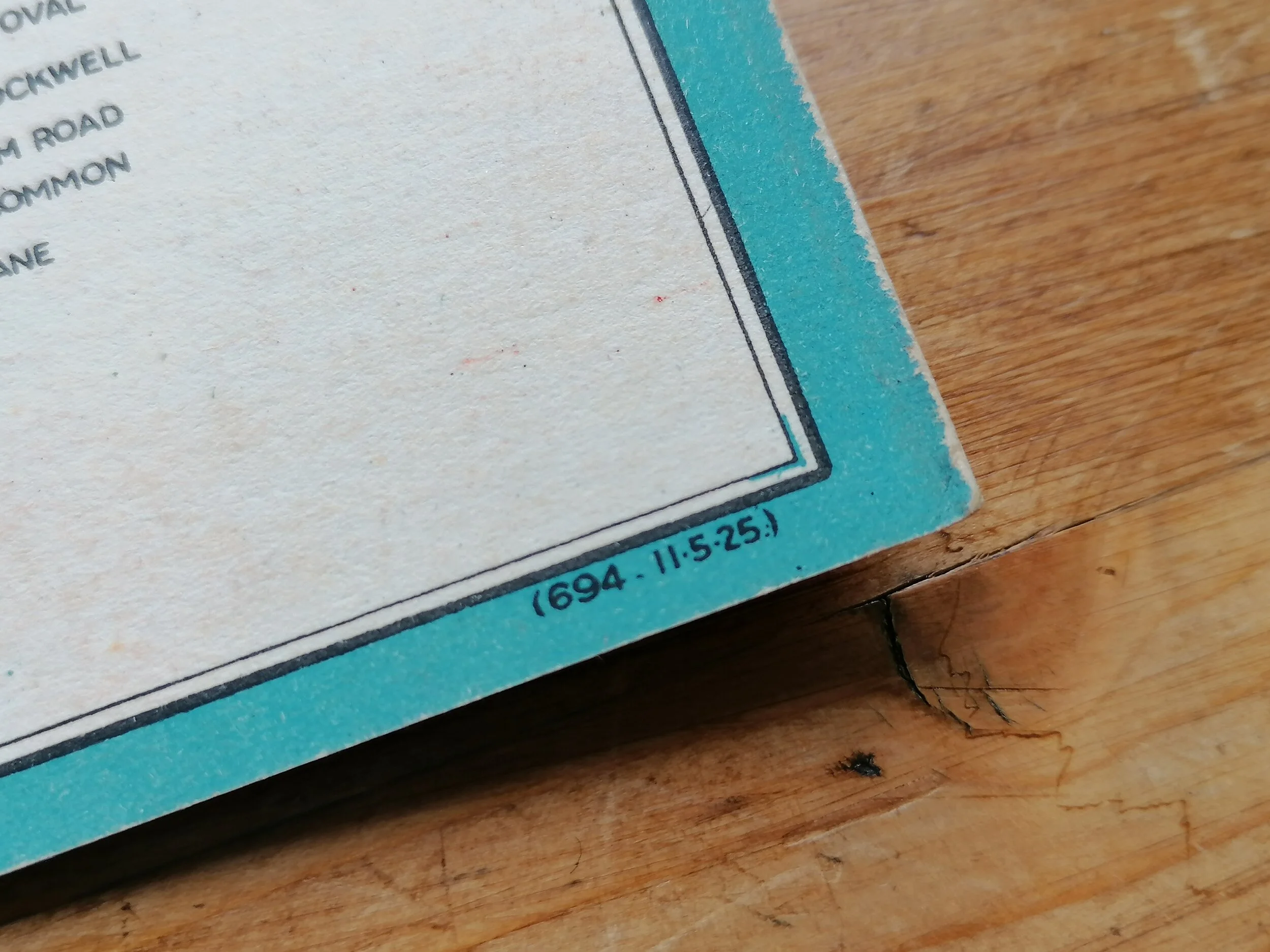 Image 4 of 10
Image 4 of 10

 Image 5 of 10
Image 5 of 10

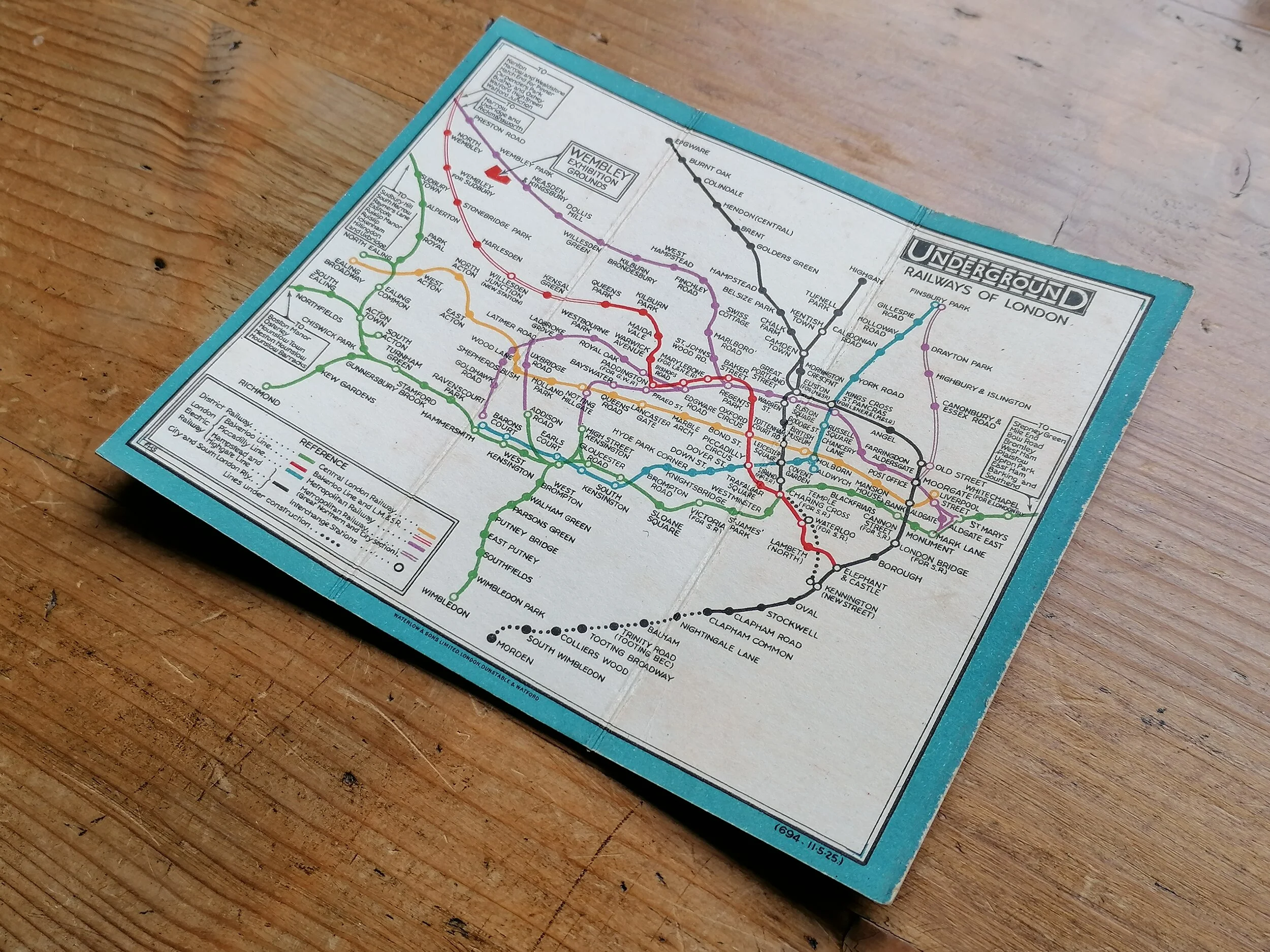 Image 6 of 10
Image 6 of 10

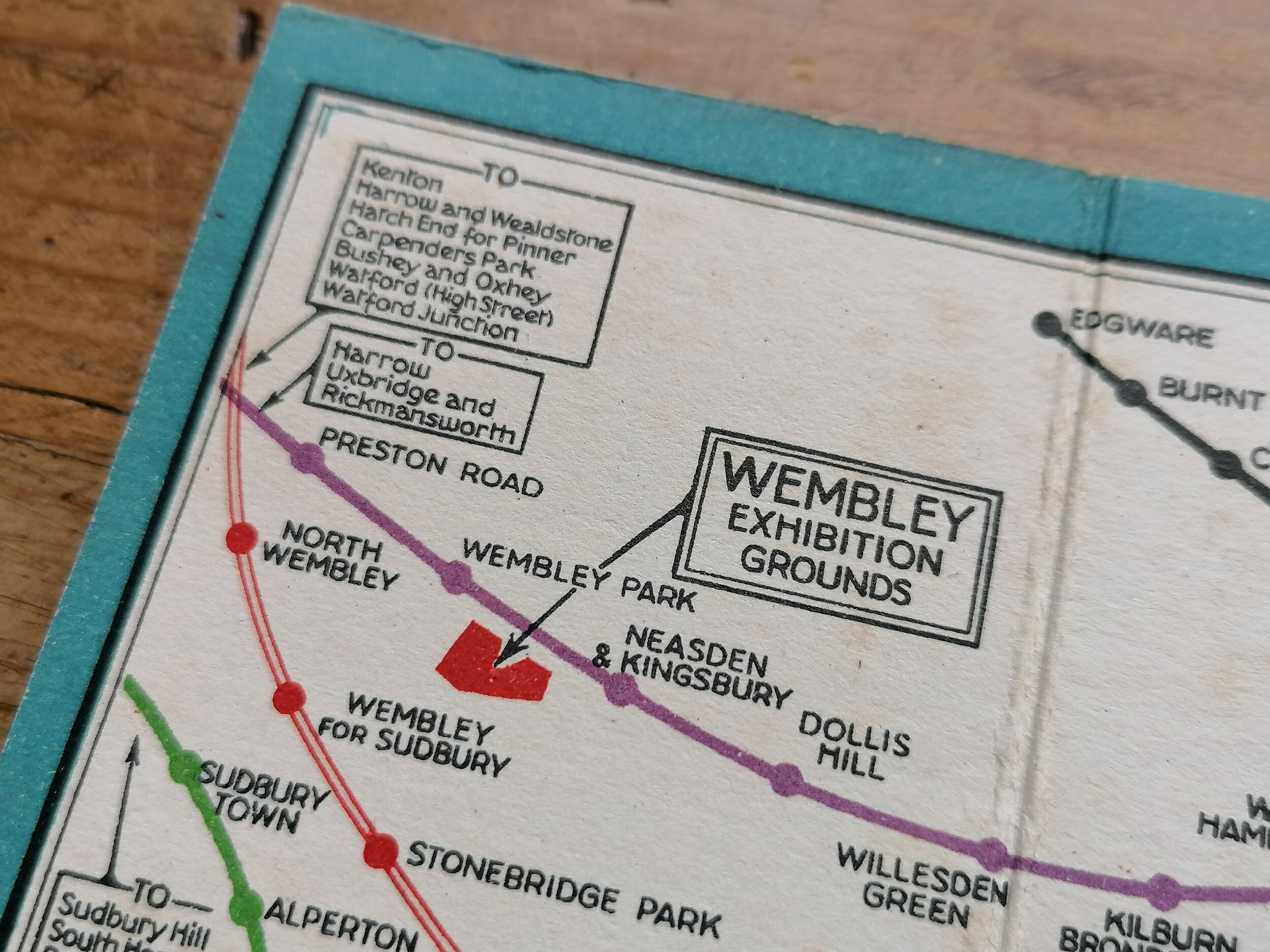 Image 7 of 10
Image 7 of 10

 Image 8 of 10
Image 8 of 10

 Image 9 of 10
Image 9 of 10

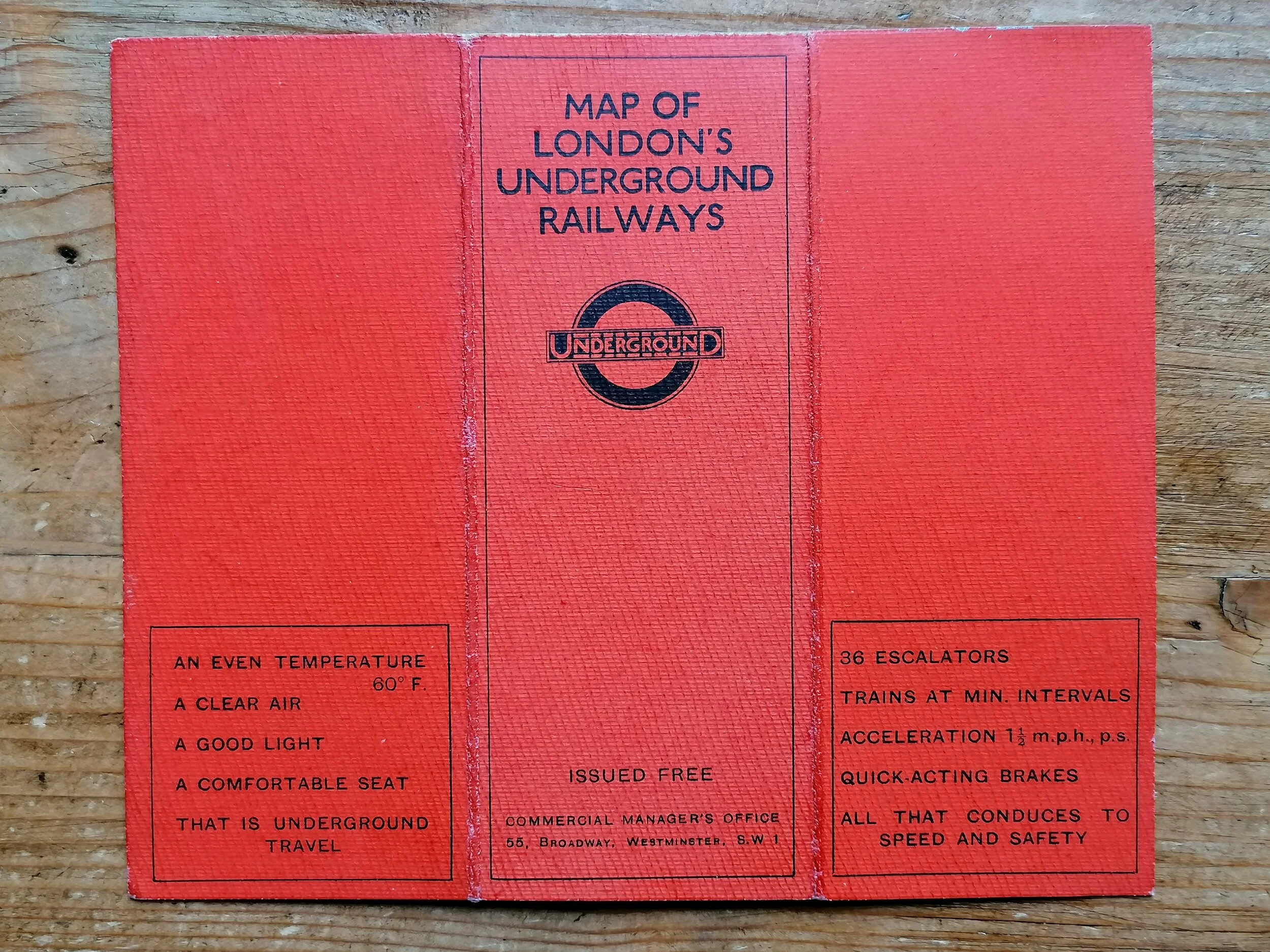 Image 10 of 10
Image 10 of 10











1925 London Underground Pocket Map - FH Stingemore (1st Edition)
Map of London’s Underground Railways
Designed by Frederick H Stingemore (FHS). Printed by Waterlow & Sons for London Underground Dated 4-5-25. 1st Edition. 14.7cm x 12.7cm Linen-card. Condition: Outstanding.
This is Fred Stingemore’s first pocket map of the London Underground, devoid of all background detail including the River Thames. Wembley Exhibition Grounds are highlighted in red, where the British Empire Exhibition took place for two consecutive years 1924 and 1925. This map saw the reintroduction of the bi-fold pocket map (first seen in 1909 and again in 1921) which would remain the primary format of the “tube map” for the next 100 years.
Despite a career spanning over 40 years in the London Underground Drawing Office, it is as HC Becks immediate predecessor as map designer that Frederick Stingemore is most well known.
Like many before him, Stingemore grappled with the density and sprawl of the Underground railway network to draft a series of pocket maps from 1925 to 1932. The Stingemore series of pocket maps saw 12 bi-fold linen-card editions, each with a distinctive colour cover. The map design improved in clarity with each iteration whilst remaining topographical in format with some distortion applied for outlying areas. It was Stingemore that had encouraged his colleague, Harry Beck, to resubmit his radical circuit diagram design after it was initially rejected. Becks diagram was published in January 1933.
FREE UK DELIVERY. Non-UK Delivery available, please request a quotation
Map of London’s Underground Railways
Designed by Frederick H Stingemore (FHS). Printed by Waterlow & Sons for London Underground Dated 4-5-25. 1st Edition. 14.7cm x 12.7cm Linen-card. Condition: Outstanding.
This is Fred Stingemore’s first pocket map of the London Underground, devoid of all background detail including the River Thames. Wembley Exhibition Grounds are highlighted in red, where the British Empire Exhibition took place for two consecutive years 1924 and 1925. This map saw the reintroduction of the bi-fold pocket map (first seen in 1909 and again in 1921) which would remain the primary format of the “tube map” for the next 100 years.
Despite a career spanning over 40 years in the London Underground Drawing Office, it is as HC Becks immediate predecessor as map designer that Frederick Stingemore is most well known.
Like many before him, Stingemore grappled with the density and sprawl of the Underground railway network to draft a series of pocket maps from 1925 to 1932. The Stingemore series of pocket maps saw 12 bi-fold linen-card editions, each with a distinctive colour cover. The map design improved in clarity with each iteration whilst remaining topographical in format with some distortion applied for outlying areas. It was Stingemore that had encouraged his colleague, Harry Beck, to resubmit his radical circuit diagram design after it was initially rejected. Becks diagram was published in January 1933.
FREE UK DELIVERY. Non-UK Delivery available, please request a quotation
